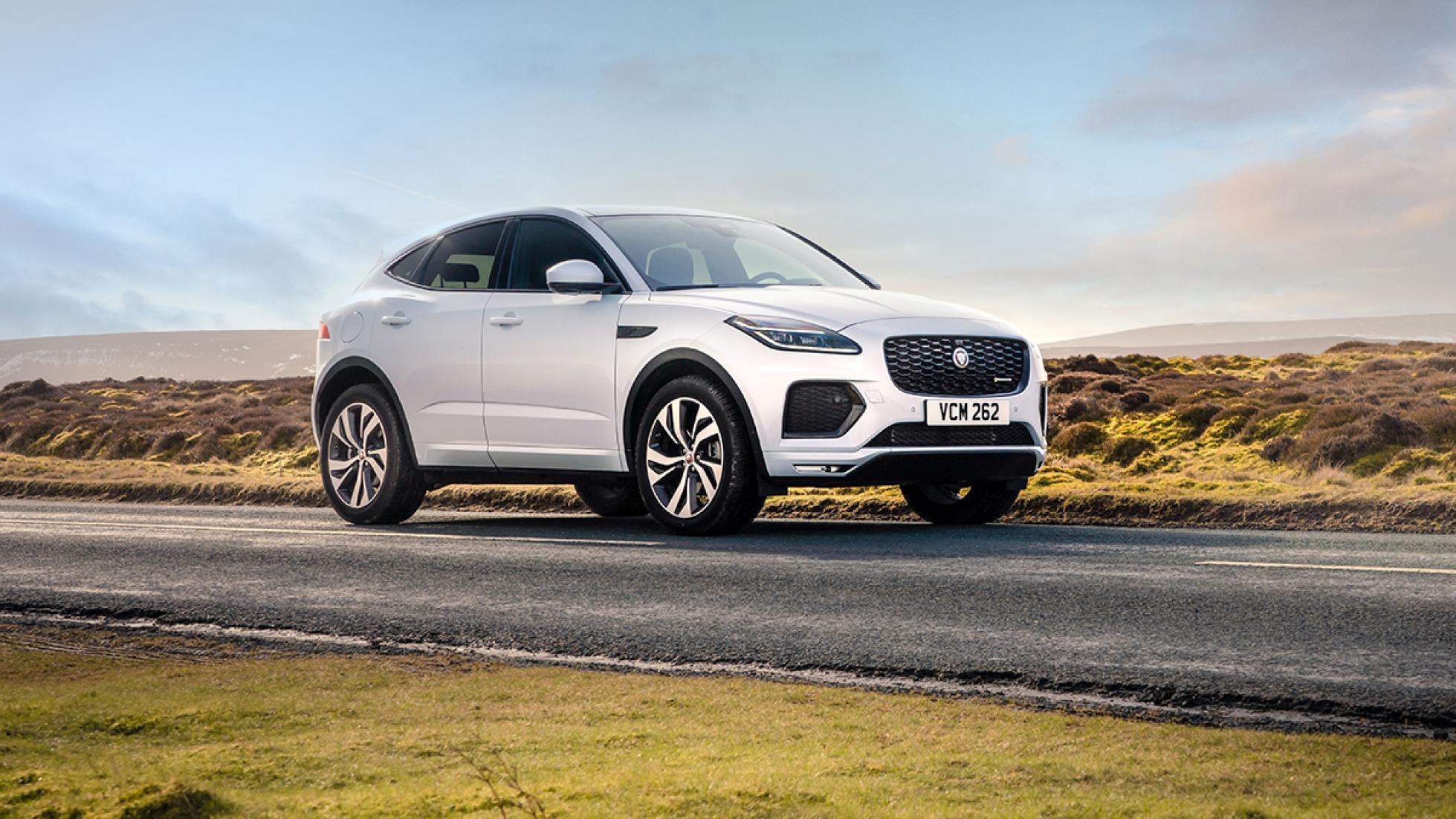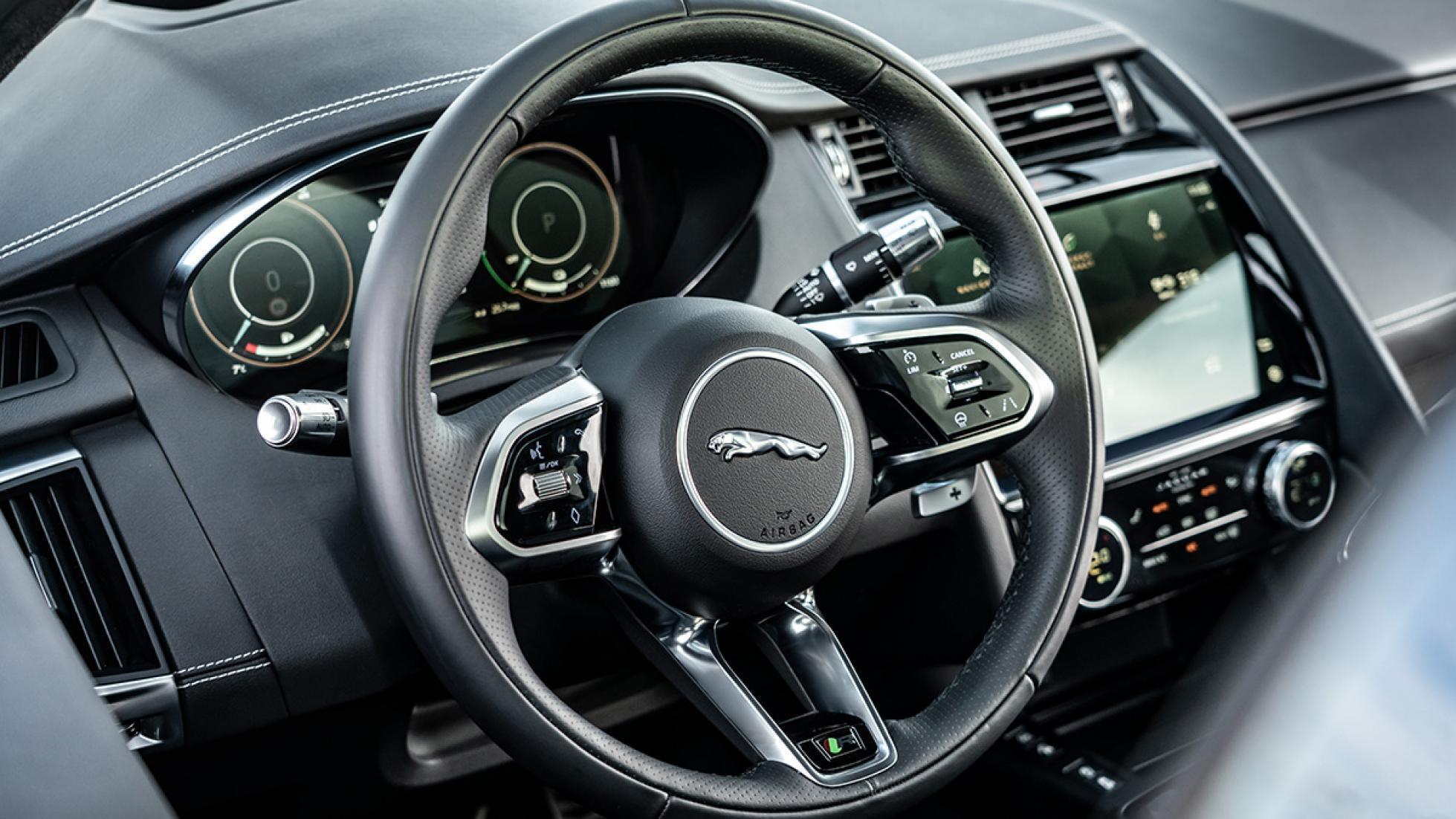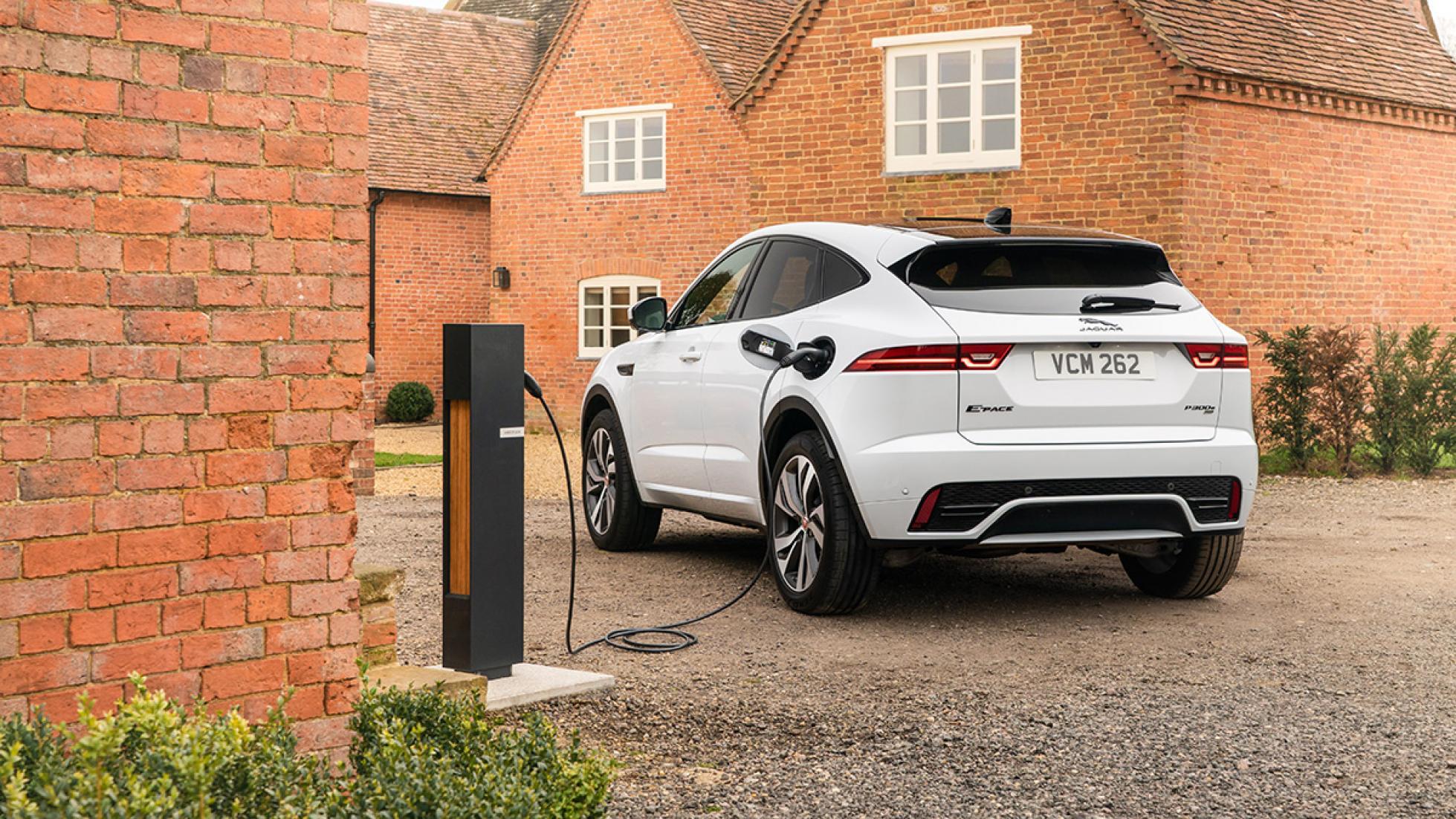Jaguar E-Pace review: baby crossover tested

OVERVIEW-What is it?
The Jaguar crossover. Just as the F-Pace is Jaguar’s SUV rival to the Porsche Macan, BMW X3, Audi Q5, Mercedes GLC and Volvo XC60, the smaller, cuter E-Pace supposedly fights the Audi Q3, BMW X1 and Mercedes GLA.
Don’t be confused by the name: ‘E’-Pace does not mean electric. For fully electric crossovers with a Jaguar leaper on the boot, you’ll want the I-Pace. The E-Pace now has mild-hybrid boost for all engines and a P300e plug-in version that’ll do most of the school run on battery power, but the all-electric Jaguar family is still a few years away.
Engines are all turbocharged, and all have four cylinders. Helpfully, the cars are all named after their power output in metric horsepower, so you simply have to choose between D165 and D200 diesels.
Same goes for the petrols, and their P initial: choose from P200, P250 or P300 variants. No matter which trim level you plump for, your petrol E-Pace will have all-wheel drive and the nine-speed automatic gearbox.
Negotiating the E-Pace trim level is a tad more complex and really splinters the range. The basic sub-£32k (RM183k) E-Pace is just that: E-Pace. No initials, no extra nomenclature.
Up the ladder is bodykitted R-Dynamic, R-Dynamic Black, while the P300 version gets a trim level all to itself. A low-CO2 engine with automatic gears wearing flared bumpers and giant wheels will be the spec you’ll spot most often in the wild. Good job the E-Pace caters for rims up to 21 inches across, then…
It’s just had a thorough overhaul in fact, migrating off its old Ford-based platform onto JLR’s newer Evoque-ready underpinnings to carve out vital space for hybrid batteries and plug-in ability.
Even the entry-level diesel engine is now allied with 48-volt electric boost, so it averages a real-world 7.1l/100km and no longer clatters into life on a frosty morning like an undead skeleton trying to escape from a biscuit tin. Sweet dreams.
DRIVING- What is it like on the road?
Don’t mistake the E-Pace P300 as some kind of Jag hot hatch. Anyone who tries to tell you this 300bhp 4x4 is some kind of XXL Golf R is talking cobblers. It sees off 0-100kph in around six seconds, but the engine works hard to shift the E-Pace’s bulk, and unless slotted into Dynamic mode (via the F-Type’s mode switch), it doesn’t make an enthusiastic noise about the fact. Even when the dials do glow red and the gearbox sips a Red Bull, the fervent note is sung from the speakers, not the exhausts. Who are you kidding?
And delectable as the alloy paddles feel, like all Jags, the E-Pace’s transmission is much happier left to swap gears for itself than translate human interference into instashifts. At the other end of the scale, the D165 won’t win any awards for being an inspiring drive, but it’s smoother than Jag four-pot diesels were a few years ago, and we got 7.1l/100km real-world economy.
Jag’s attempted to give the E-Pace handling smarts worthy of its range of nice-handling cars, and to a degree, it’s worked. This is not in any way intimidating to an SUVirgin, or ungainly. And because it’s less girthy than the F(at)-Pace, it’s immediately less stressful to tack along in.
This has had an effect on the ride. This is a firm car that tosses your head around as it deals with British tarmac. It’s never crashy, but it’s not quite supple either. Neither is the similarly sporty BMW X2. Is that good enough for a Jaguar, which ought to breathe with the road instead of going all German and schporty? Again, the E-Pace is fine for a crossover, but no revelation.

ON THE INSIDE-Layout, finish and space
If you’re after an E-Pace over Jaguar’s XE sedan, you’ll likely be seeking the classic ‘command driving position’ sat up on high. The E-Pace delivers: you feel like you’re sat a good wedge taller than in a BMW X1 or X2, but the high beltline still cocoons you within the car.
A new I-Pace-spec steering wheel with huge metal paddles is among the updates for the 2021 facelift. Also new are the climate controls and the gear selector, which replaces the old and rather likeable pistol-grip joystick.
The best news is the new 11-inch Pivi Pro interface which at long, long last gives Jaguar a decent infotainment system. The Apple CarPlay/Android Auto mirroring was foolproof in our test cars, while the native interface is clearer and more modern-looking than before. It’s taken Jaguar far too long to get here, but operating the tech inside is no longer like trying to pull old photos off your circa-2003 Windows XP laptop. While driving.
Two USB sockets lurk under the armrest in a huge cubbyhole, with a detent in its lid so cables trailing into grande cupholders aren’t pinched.
Someone’s thought that through. Probably the same person who hollowed the door pockets to cradle bottles at a 45-degree angle so they don’t rattle as you steer, insisted that a six-footer should sit comfortably in the back behind an equally sized driver, with enough room for size-12 feet even when the pilot has their seat wedged as low as it’ll lie, and made sure the panoramic glass roof begins slightly aft of the driver’s head, so any glares or glints don’t creep into your eyeline, or render the screens an opaque reflecto-mess.
The boot’s not giant, thanks to the stylist’s swoop of a pen that brings the rear window down at a fast angle. It’s 425 litres with the seats in place, or 1,234 litres in van mode. Bigger than an Audi Q2, but smaller than the (ageing) Q3, and hundred of litres below a BMW X1.
OWNING-Running costs and reliability
Which E-Pace is cheapest to run will depend on what you’re using it for… and who’s picking up the bill. For company car users, the P300e is likely to be a no-brainer, thanks to official claims of 44g/km and 2.0l/100km.
We found that it’s good for 40 kilometres of real-world EV-only range, versus a claim of 55 kilometres. At £46,000 (RM263k) it’s the most expensive E-Pace to buy outright, but if you’re an urban commuter with the means to charge overnight, the P300e makes a strong case for itself. Mind you, Volvo’s XC40 PHEV is plenty cheaper than the E-Pace.
The E-Pace’s price spread stretches from £32,000-£47,000 (RM183k-RM269k), though on finance it tends to come off second-best against the Audis and BMWs of this segment.

VERDICT-Final thoughts and pick of the range
"Jaguar’s little crossover is broadly competitive but loses out overall to Volvo's XC40"
Jaguar’s small crossover doesn’t exude much Jaguarishness. The ride is bobbly and the car feels heavy beneath you. That said, it’s perkier to drive than its German rivals, more refined than it used to be, and the choice of engines has really been bolstered by the arrival of hybrids.
Also in the ‘welcome improvement’ column is the 11-inch touchscreen, which, unlike the last version, doesn’t treat smartphone pairing like Korean peninsula peace negotiations, severing ties every ten minutes and refusing to see reason. Lifting the cabin into the modern era, it’s nice to not be sitting inside a fossil any more.
Despite its tech gains, the E-Pace remains haunted by the same problem as before. If you want to spend £35k-£50k (RM200k-RM286k) on a suave-looking British mini-SUV (and you aren’t fussed about handling) then you buy a Range Rover Evoque. Precisely because – unlike the Jag – it doesn’t seem to say ‘entry-level, bottom-of-the-range.’

